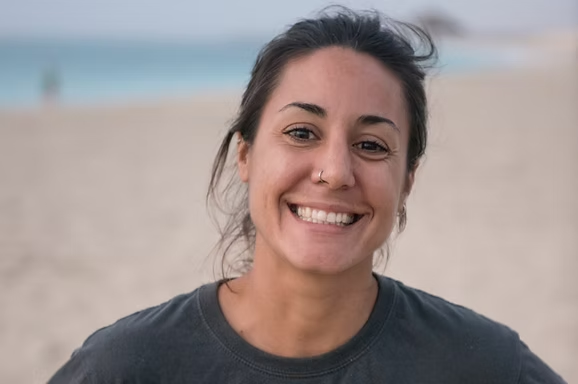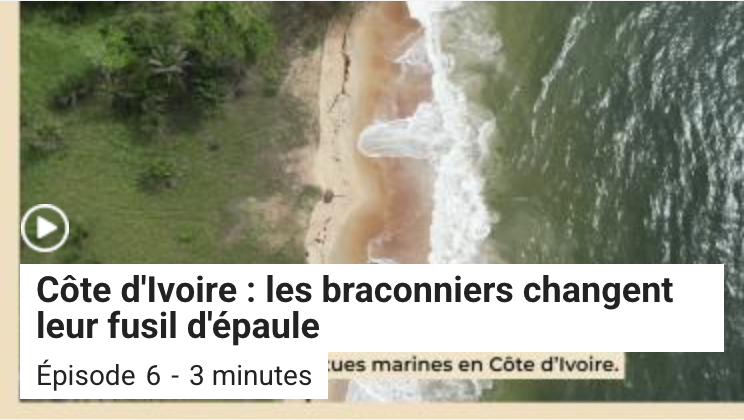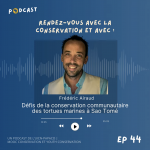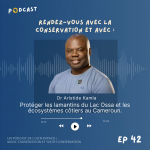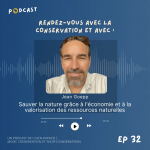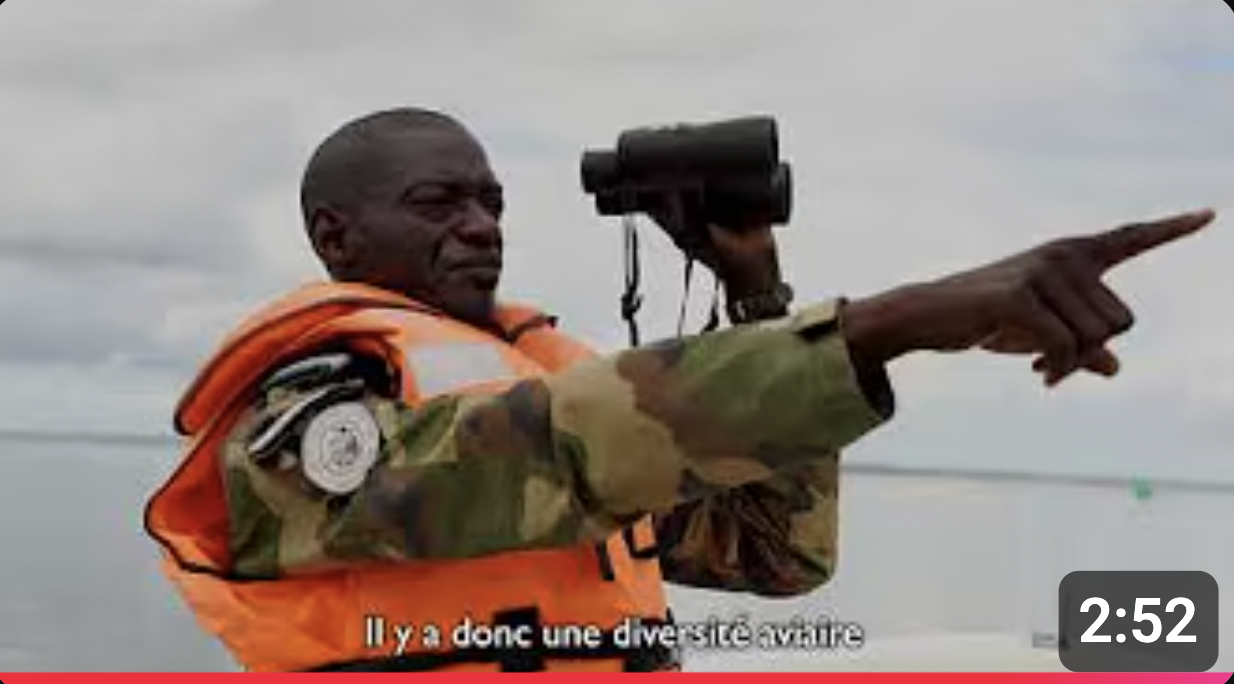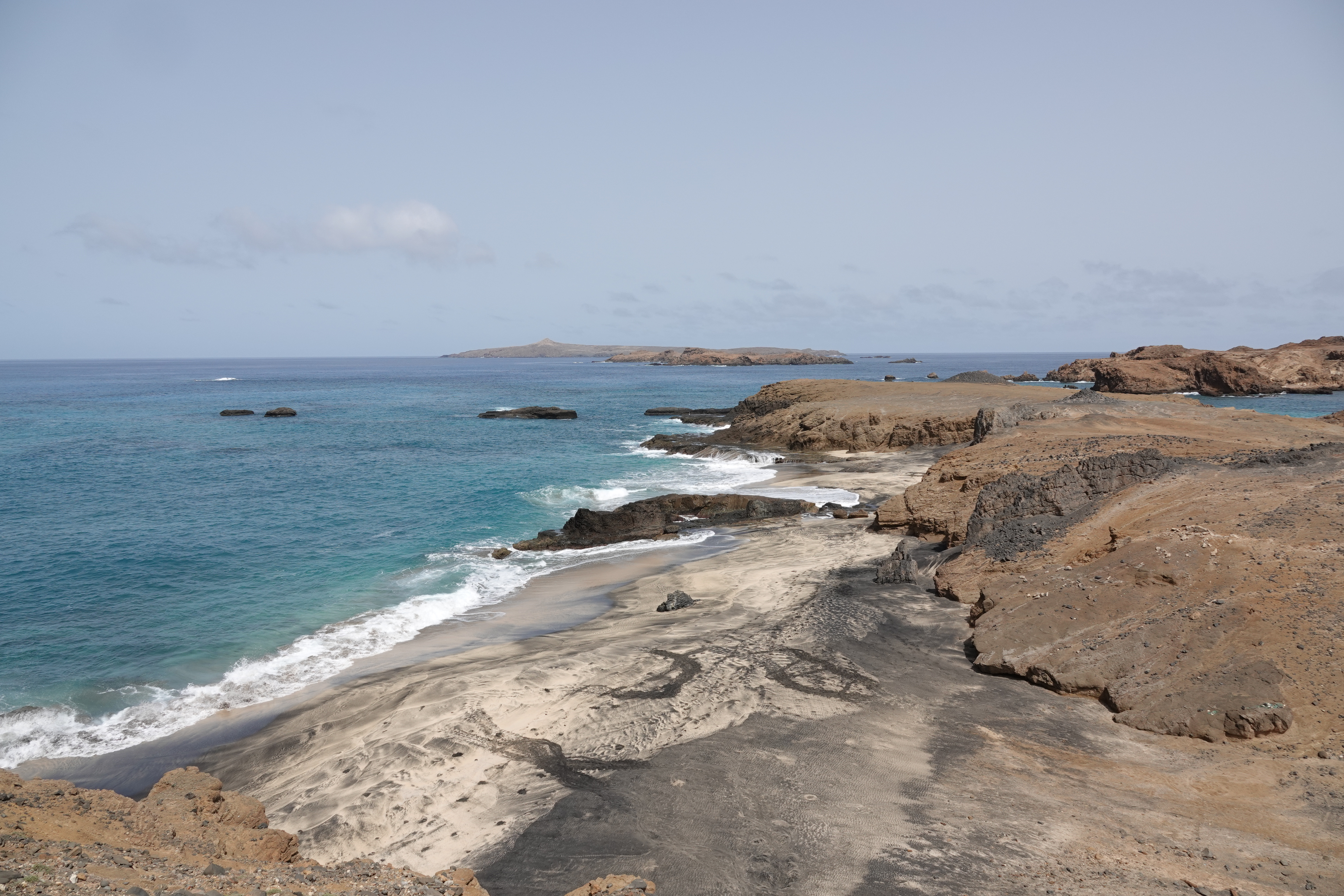
PPI 6 Report, Part 1: Coastlines in Action
Published on 7 August 2025From turtle protection to mangrove restoration, local associations play a central role in marine and coastal conservation in West and Central Africa. Over the past four years, PPI 6 has supported CSO projects by funding them and strengthening their organizational development to reinforce their structures. Thanks to this support, these CSOs have been able to implement concrete and sustainable actions, reconciling biodiversity conservation with local development.
1 – Marine species: the victory of cooperation
New technologies to better protect sharks and promote sustainable fishing
In Cape Verde, two associations – Projeto Biodiversidade on Sal Island and Projecto Vitó in the south of the archipelago – adopted the same innovation: BRUVs, baited underwater cameras capable of discreetly filming marine life.
These images not only help better understand shark behavior but also build strategies tailored to each context.
On Sal, Projeto Biodiversidade used them to document the presence of juvenile lemon sharks (VU) and advocate for their nursery to be designated as a Marine Protected Area (MPA). In three years, more than 75 BRUVs deployed, 83 sharks tagged, and 280 drone missions provided solid evidence to support the official MPA request. The initiative also strengthened ties with the local community: 45 guides trained, creation of a workers’ association, and turtle poaching reduced by 97 to 100% on Parda beach between 2022 and 2024.
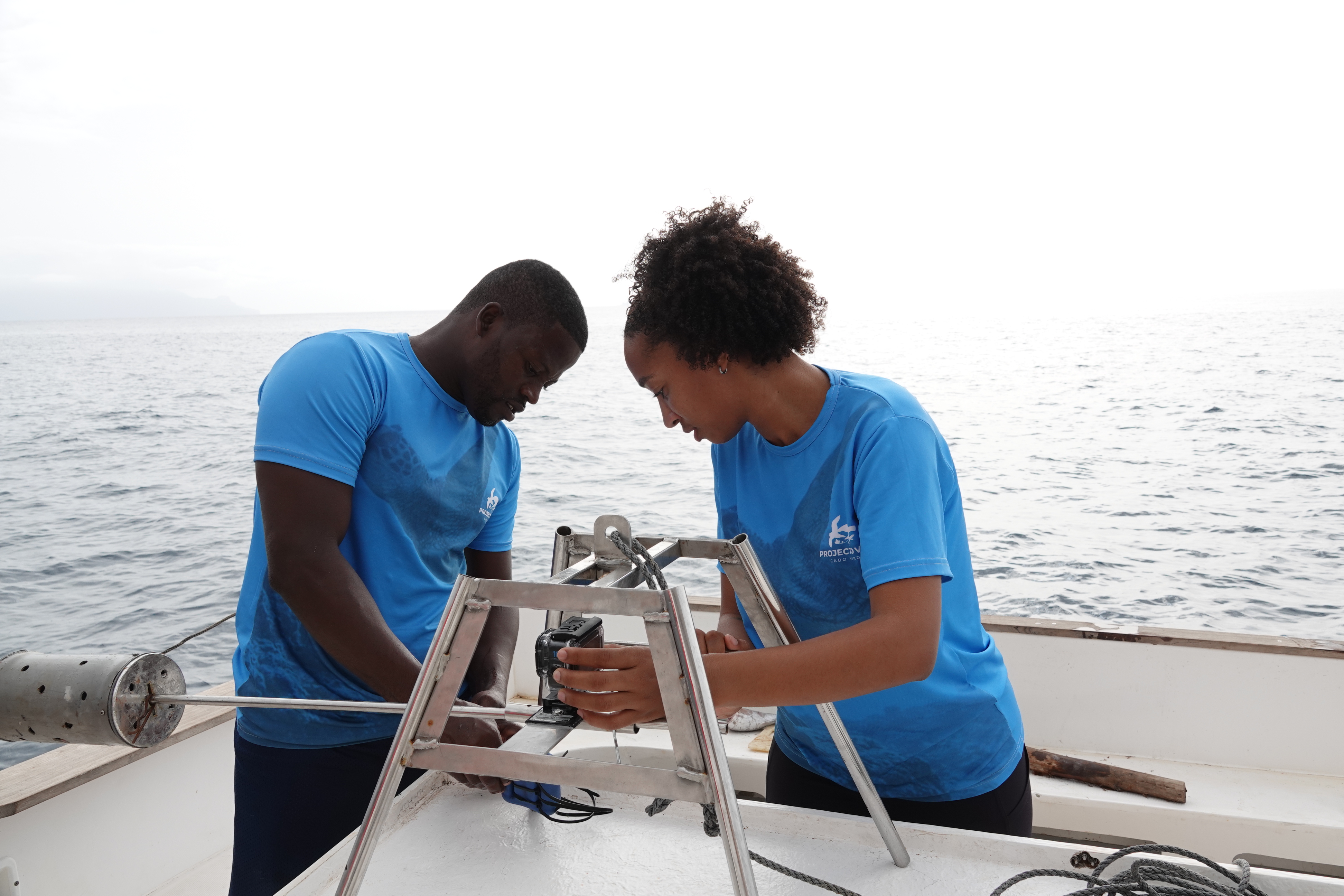
Two members of the CSO Projecto Vitó preparing the BRUV for deployment. Cape Verde, 2024. Credit: Marie Furtado.
For its part, Projecto Vitó adapted the method to work hand in hand with fishers from Fogo, Brava, and the Rombo islets. The “Guardians of the Sea” program has already trained 63 fishers, distributed 40 safety kits, and raised awareness among more than 2,600 students in 54 schools using educational materials illustrated with field images.
The Guardians of the Sea also took part in the successful deployment of 72 BRUV monitoring campaigns. Their local geographic knowledge greatly contributed to the effective selection of sampling sites. Here, the videos help identify sensitive zones, reduce bycatch, and test deterrent devices on boats.
In both cases, technology is only a starting point: it is the alliance between science and community action that makes these projects effective, combining biodiversity protection with sustainable livelihoods for those who depend on the sea.
Watching the giants of the sea to better protect them
With PPI’s support, Renatura carried out pioneering work in Congo, monitoring cetaceans along the Congolese coast, which until then had been poorly documented. The results are promising.
Unprecedented observations of humpback whales (LC) were recorded for three consecutive years. Not only were more than 300 sightings documented (six times the initial target), but the data collected also led to a reassessment of the role of the Congolese coast in the species’ life cycle: not just a migratory passage, but potentially a breeding, calving, and nursery area.
Facing logistical challenges at sea, the team adapted by adopting an innovative method: acoustic monitoring of dolphins using underwater hydrophones. This shift, combined with beach-based observations and fishers’ reports, refined knowledge of small cetacean presence, especially the humpback dolphin (CR), a still poorly understood species.
The coastal observer network, set up with the local CSO La Bouée Couronne, helped record 132 dolphin and turtle sightings, and release 206 accidentally captured turtles, reducing the impact of artisanal fishing on marine biodiversity.
Finally, a first national workshop on cetaceans brought together scientists, CSOs, public authorities, and companies.
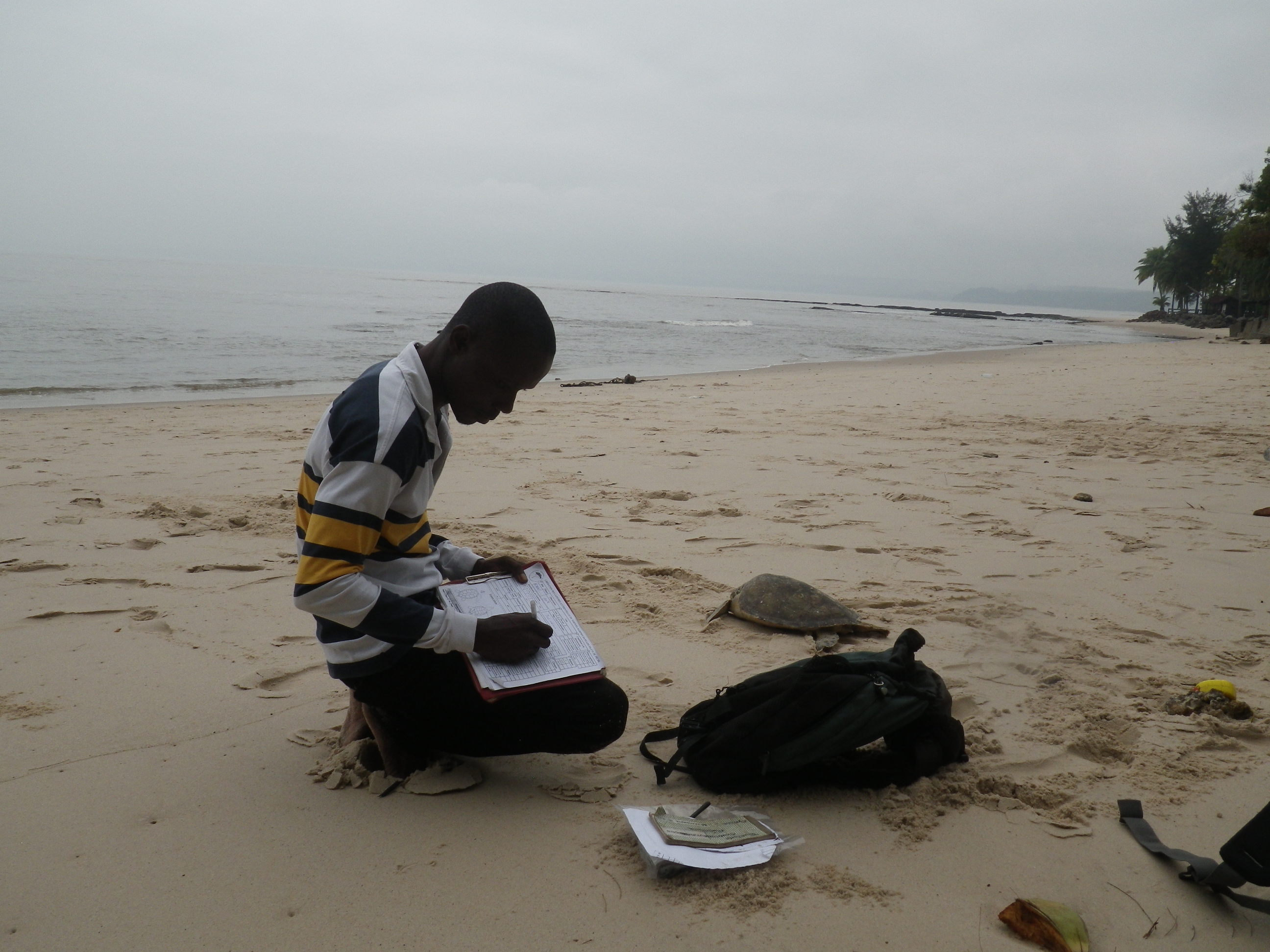
Turtles have found their best allies: former poachers
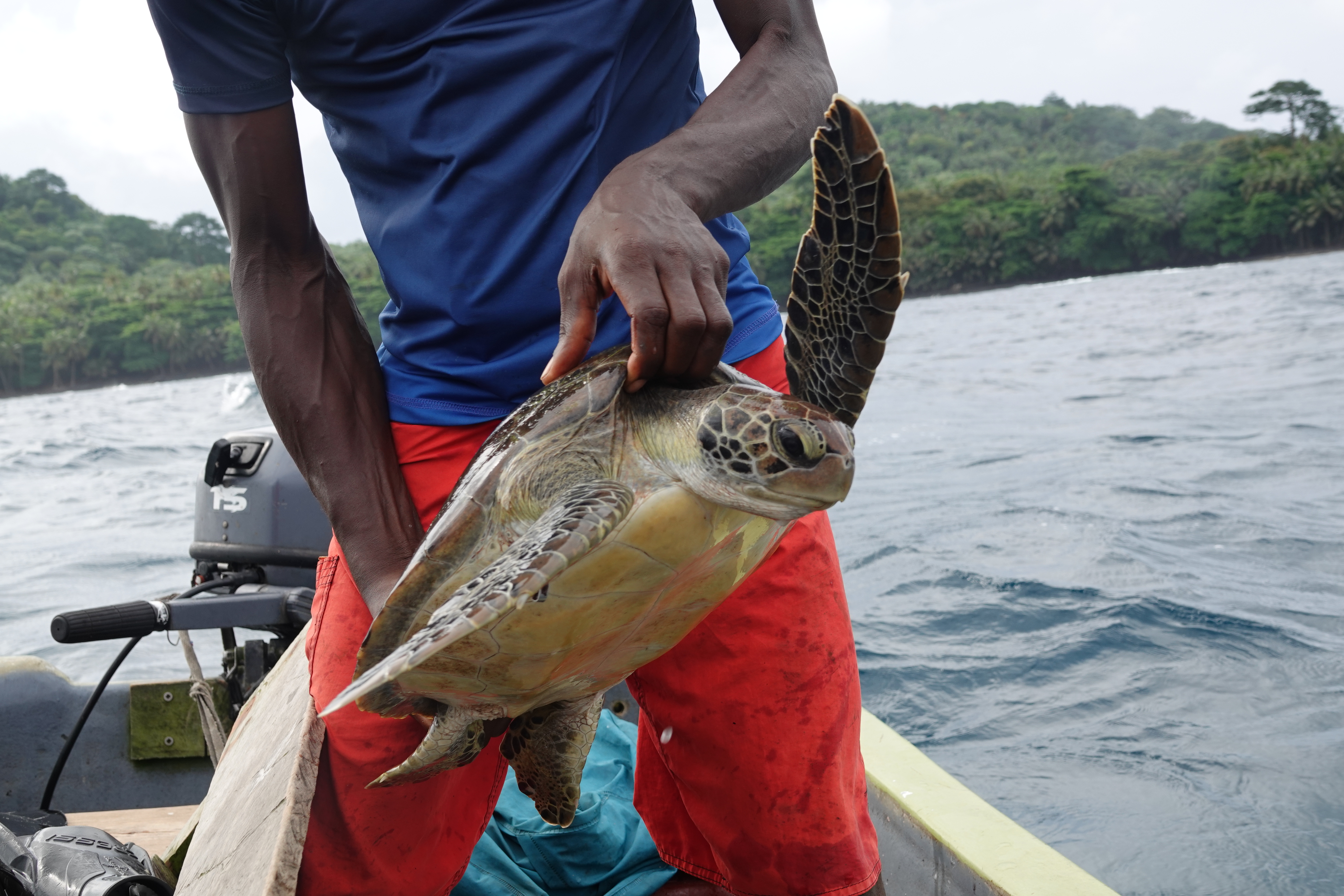
Measuring a turtle by a member of Programa Tatô. Gabon, Sao Tome, 2025. Credit: Marie Furtado.
On São Tomé Island, the NGO Programa Tatô has done much more than protect sea turtles: it has profoundly transformed the relationship between coastal communities and these threatened species. Thanks to a rigorous community program, 80 beaches were monitored by 55 local agents, allowing the protection of nearly 1,000 nests and the release of over 81,000 baby turtles to the ocean in one season.
The project also carries a social dimension: 55 former poachers and sellers of turtle-derived products have been converted into biodiversity protectors, monitoring agents, or artisans specialized in upcycling. Result: the number of turtles killed dropped from 100 to 11 per year, and sustainable economic alternatives have emerged.
In Côte d’Ivoire as well, the NGO Conservation des Espèces Marines (CEM) trains former poachers to safeguard sea turtles:
Click to watch the TV5 Monde video!
For the NGO Programa Tatô, this behavioral shift was supported by a large-scale awareness campaign — over 80,000 people reached — through actions in schools, radios, beaches, and even on television with the play “Tataluga Mém di Omali.” Added to this were exemplary collaborations with the national police and hoteliers to regulate ecotourism and secure sensitive beaches like Jalé, now classified as a special reserve.
Between science, education, and social inclusion, Programa Tatô shows that we can save turtles… by valuing people. Not everything was easy: economic pressure still weighs on some former poachers, and restricted access to certain beaches continues to limit full monitoring. But these obstacles confirm that conservation cannot succeed without long-term socio-economic support, which the project has successfully initiated.
The return of the manatee
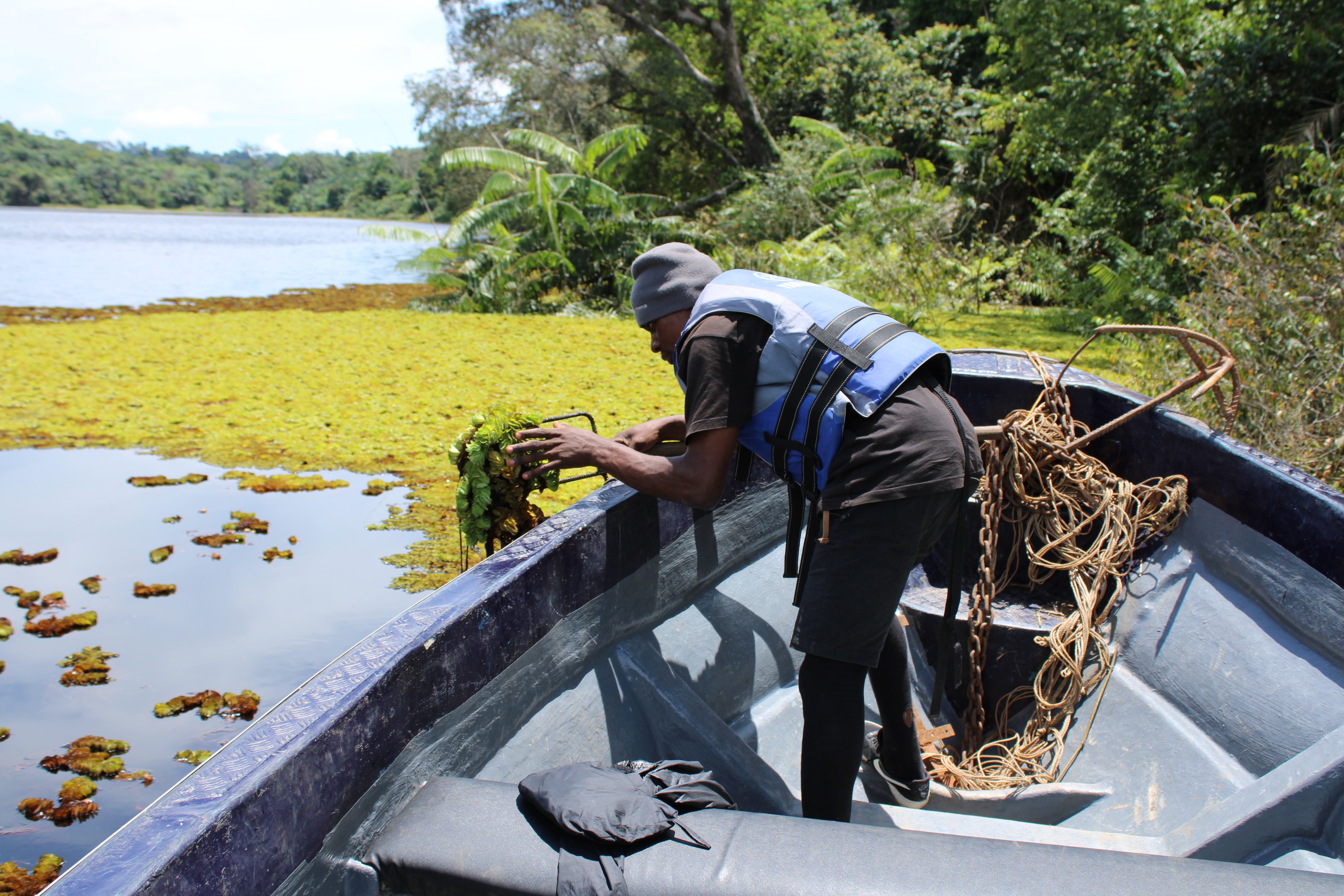
Monitoring of Salvinia on Lake Ossa – Credit: AMMCO
In the Lake Ossa Wildlife Reserve, African manatees had almost disappeared. The cause: a massive invasion of Salvinia molesta, an aquatic fern from South America, which covered up to 3,000 hectares of the lake, suffocating the ecosystem. The project led by AMMCO reversed the trend.
Thanks to a strategy combining manual removal and biological control (with the introduction of the weevil Cyrtobagous salvinae), over 600 tons of Salvinia were removed, reducing coverage to 13% of the water body. Result: manatees (VU) are now observed on 3 out of 4 outings, and fish catches have risen again, with an average of 12 kg caught per day.
At the same time, AMMCO trained over 80 people in sustainable practices such as fish farming, ecotourism, or the production of eco-friendly charcoal made from Salvinia. Although nearly 19 tons were produced, the sector remains experimental, with technical barriers and limited local adoption. However, above-ground fish farming, directly managed by the association, shows promising results with nearly 900 kg of fish produced.
This project shows that restoring an ecosystem also means accepting to test, adjust, and sometimes take a step sideways. While not everything is yet sustainable, the foundations laid around Lake Ossa — between restored biodiversity, increased scientific knowledge, and more resilient communities — give reasons to hope for a sustainable future for the manatee… and those who share its territory.
Meanwhile, the NGO Help Congo is working within the Conkouati-Douli National Park in Congo-Brazzaville to improve knowledge of the African manatee and strengthen its protection. Through a rigorous scientific approach, the team managed to map refuge and feeding areas, collect over 10,000 hours of acoustic data, and confirm the species’ presence in 30 of the 43 monitored sites. Major research is underway, notably through a PhD supported by Beauval Nature, to refine population estimates and identify movement corridors.
Beyond emblematic species, an entire fabric of fragile ecosystems needs to be regenerated. Mangroves, mudflats, reefs… these habitats, essential for biodiversity and coastal populations, are the focus of ambitious restoration efforts, led by those who depend directly on them.
2 – Restoring Ecosystems, Strengthening Human Connections
In West African coastal areas, ecosystem restoration is not limited to planting trees or immersing structures. It involves reimagining the links between local populations and natural environments, to turn them into living, productive, and sustainable spaces.
In Senegal, the NGO Nebeday mobilized communities in the Saloum Delta Biosphere Reserve to restore mangroves and strengthen women’s autonomy. Result: over 160,000 mangroves planted, a biocharcoal sector benefiting 70 women, and the release of over 1,000 baby turtles thanks to nest monitoring on the beaches. Despite delays linked to institutional changes, the project adapted, and the population is now actively involved in monitoring the reserve.
🎤Fatoumata Camara – Nebeday, Senegal: “This project pushed us to strengthen our internal management. We set up more precise monitoring, a clear patrol schedule, and the women in the group now know how to distribute revenues fairly.”
Click to listen to the podcasts!
In Ghana, Hen Mpoano restored over 30 hectares of mangroves in the Ankobra River basin, while establishing two Community Resource Management Areas (CREMA) covering 11,500 hectares. More than 1,000 residents were sensitized, and over 500 people trained in alternatives such as beekeeping and agroforestry, strengthening both local governance and economic resilience.
🎤 Kevin Fiati – Hen Mpoano, Ghana: “With PPI’s support, we moved to another level. The structuring of our CREMAs, community mobilization, and links with authorities… everything gained in quality and legitimacy.”
Mangrove reforestation site by the NGO Hen Mpoano. Ghana, 2023. Credit: Marie Furtado.
Finally, still in the Saloum Delta, the Gandoule Marine Protected Area (AMPG) focused on restoring seabeds, with 400 artificial reefs immersed and 24 hectares of mudflats restored, encouraging the return of fish, mollusks, and birds. These actions were led by the residents themselves, eco-guards and fishermen.
These three projects show that along the coast, restoring ecosystems also means restoring trust between communities, nature, and the future.
🎤 Alioune Diallo – AMPG, Senegal: “Before, the eco-guards didn’t really understand their role. Today, thanks to the PPI, they know what to do to protect the marine area. We also learned to communicate better: now we’re on Facebook, TikTok, and our pages are followed. The PPI has strengthened us.”
Restoring nature is essential, but it is also necessary to ensure sustainable livelihoods for local communities so that these efforts last. From artisanal fishing to waste management and ecotourism, the projects supported by PPI prove that economic development and marine protection can go hand in hand.
3 – Local Development: Turning Challenges into Opportunities
Transforming Marine Waste into a Local Solution
On the island of Santa Luzia, where the absence of infrastructure makes recycling complex, the NGO Biosfera took on a major challenge: turning plastic pollution into a driver of local innovation. In three years, over 1,200 kg of plastic were collected and shredded, and 320 kg were effectively recycled in a processing unit created in Mindelo, now fully operational. This platform, equipped with an extruder, a press, and a shredder, enabled the production of the first objects made from recovered plastic, marking the first steps of a local circular economy.
Two people from neighboring communities were trained and hired, laying the foundation for a sustainable employment sector. At the same time, waste characterization studies were conducted on the beaches of northern Santa Luzia, with the support of the Darwin200 program, making it possible to identify the types, origins, and return cycles of waste.
Conditions, however, remain difficult: transporting waste to neighboring islands is almost impossible, and marine plastic is often too degraded to be efficiently recycled. These technical limitations forced the team to revise some objectives downwards, but without abandoning the long-term vision: to build a model where waste management becomes a lever of island resilience.
🎤 Member of the Biosfera team: “The PPI gave us confidence. Before, we didn’t dare apply for certain funding. Now, we know we have the capacity, we know how to formulate things, how to structure a team.”
Reviving Ecotourism Through Africa’s Most Threatened Crocodile
In southwestern Côte d’Ivoire, in the Dodo Estuary Voluntary Nature Reserve (RNVED), the NGO Conservation des Espèces Marines (CEM) set out to protect an exceptional resident: the West African slender-snouted crocodile (Mecistops cataphractus) (EN), a species critically endangered and still very little known, even by local populations.
The project combined in situ conservation and community-based ecotourism, with several notable results:
• 10 km of riverbanks were demarcated and protected, and 78 hectares of wetlands identified as sensitive for preservation.
• 8 eco-guards were trained to lead ecotourism visits and monitor crocodiles, with educational tools produced and distributed in the region.
• 5 tourism partnerships were established with local hotel complexes to promote visits on the “crocodile” circuit.
• 514 people were sensitized to conservation issues in surrounding villages and schools.

In search of the West African slender-snouted crocodile with CEM. Côte d’Ivoire, 2024. Credit: Marie Furtado.
Tourist attendance, however, remained well below expectations (17 tourists welcomed compared to 100 planned), hindered by the site’s remoteness (2.5 km walk), reluctance for night outings, and seasonal conditions making crocodiles less visible. In response, the team adapted its offer by creating daytime walks, a forest hike and sport fishing activities, to highlight the area’s biodiversity in other ways.
And this is what makes the project unique: offering an ecotourism experience centered on the crocodile, a species often seen as unattractive, was a real gamble — much harder to “sell” than turtles or dolphins. Yet the first milestones prove that this type of promotion is possible, especially when it is based on strong local involvement.
The translocation of a slender-snouted crocodile, although theoretically validated, could not be carried out due to administrative delays. Nevertheless, the reserve is now identified as the top priority site in Côte d’Ivoire for a future reintroduction, recognized by the authorities as a model to follow.
This overview of coastal and marine initiatives provides a concrete picture of what the Small-Scale Initiatives Program (PPI) has achieved over the past four years as part of its sixth phase. Thanks to its financial support, but also its capacity-building efforts, the PPI has enabled dozens of African civil society organizations (CSOs) to strengthen their local presence, structure their actions, and contribute to tangible advances in marine biodiversity conservation, while sustainably involving communities. These results remind us that conservation cannot be decreed from offices but must be built close to the field, with those who know, protect, and depend on marine ecosystems.
